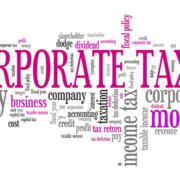The U.S. Department of Labor (DOL) has released a final rule which should make it easier for smaller businesses to provide retirement plans to their employees. According to the DOL, the rule will enable more small and midsize unrelated businesses to join forces in multiple employer plans (MEPs) that provide their employees a defined contribution plan such as a 401(k) plan or a SIMPLE IRA plan. Certain self-employed individuals also can participate in MEPs.
In October 2018, the DOL issued a proposed rule to clarify when an employer group or association, or a professional employer organization (PEO), can sponsor a MEP. (A PEO is a company that contractually assumes some human resource responsibilities for its employer clients.) The final rule, effective September 30, 2019, is similar to the proposal, but not entirely.
The appeal of MEPs
According to the DOL, businesses that participate in a MEP can see lower retirement plan costs as a result of economies of scale. For example, investment companies may charge lower fund fees for plans with greater asset accumulations. By pooling plan participants and assets in one large plan, rather than multiple small plans, MEPs make it possible for small businesses to give their workers access to the same low-cost funds offered by large employers.
MEPs also let participating employers avoid some of the burdens associated with sponsoring or administering their own plans. Employers retain fiduciary responsibility for selecting and monitoring the arrangement and forwarding required contributions to the MEP, but they can effectively transfer significant legal risk to professional fiduciaries who are responsible for managing the plan.
Although many MEPs already exist, the DOL believes that previous guidance, as well as uncertainty about the ability of PEOs and associations to sponsor MEPs as “employers” under the Employee Retirement Income Security Act (ERISA), may have hindered the formation of plans by smaller employers. The final rule clarifies when an employer group or association or a PEO can sponsor a MEP.
Permissible MEP sponsors
Under the final rule, a group or association, a PEO, and self-employed people can qualify as employers under ERISA for purposes of sponsoring MEPs by satisfying different criteria.
Groups and associations: Among other requirements, groups and associations of employers must have a “commonality of interest.” This means that the employers in a MEP must either:
- Be in the same trade, industry, line of business or profession, or
- Have a principal place of business in the same geographic region that doesn’t exceed the boundaries of a single state or metropolitan area. (A metropolitan area can include more than one state.)
Thus, a MEP could, for example, comprise employers in a national trade group or a local chamber of commerce.
But the rule prohibits an employer group or association from being a bank, trust company, insurance issuer, broker-dealer or other similar financial services firm (including a pension record keeper or a third-party administrator) and from being owned or controlled by such an entity or its subsidiary or affiliate. Such entities can, however, participate in their capacities as employer members.
PEOs: The final rule requires PEOs to, among other things, perform “substantial employment functions” for their client-employers that adopt the MEP. In contrast to the proposed rule, the final rule includes a single safe harbor for all PEOs, regardless of whether they’re certified PEOs. And the new safe harbor includes only four criteria, rather than the proposed nine.
To be considered to perform substantial employment functions for its client-employers, the PEO must, for each client-employer that adopts the MEP:
- Assume responsibility for and pay wages to employees, without regard to the receipt or adequacy of payment from those clients,
- Assume responsibility to pay and perform reporting and withholding for all applicable federal employment taxes, without regard to the receipt or adequacy of payment from those clients,
- Play a definite and contractually specified role in recruiting, hiring and firing workers, in addition to the client-employer’s responsibility for recruiting, hiring and firing workers, and
- Assume responsibility for, and have substantial control over, the functions and activities of any employee benefit that the PEO is contractually required to provide, without regard to the receipt or adequacy of payment from those client employers for such benefits.
Self-employed individuals: So-called “working owners” without employees may qualify as both an employer and an employee for purposes of the requirements for groups and associations. Such owners must:
- Have an ownership right in a trade or business (including a partner or other self-employed individual),
- Earn wages or self-employment income from the trade or business in exchange for personal services, and
- Work on average at least 20 hours per week or 80 hours per month for the trade or business, or have wages or self-employment income from the trade or business that at least equals the working owner’s cost of coverage for participation by the owner and any covered beneficiaries in any group health plan sponsored by the group or association.
The determination of whether an individual qualifies as a working owner must be made when he or she first becomes eligible for participation in the defined contribution MEP. Continued eligibility must be periodically confirmed using “reasonable monitoring procedures.”
An open issue
When it issued the proposed rule, the DOL solicited comments on “open MEPs” or “pooled employer plans” — which are defined contribution retirement arrangements that cover employees of employers with no relationship other than their joint participation in the MEP. After reviewing the feedback, the DOL decided open MEPs deserve further consideration. It therefore issued, in conjunction with the final rule, a 16-page Request for Information. Responses are due October 29, 2019.
Unlike the DOL, the U.S. Congress has authority to amend ERISA and other laws that affect retirement savings. In May 2019, the House of Representatives passed legislation that would allow open MEPs. The Setting Every Community Up for Retirement and Enhancement Act of 2019, commonly known as the SECURE Act, hasn’t yet advanced in the U.S. Senate.
If you have questions on how the final rule might benefit your company’s retirement plan, please contact us. We’d be pleased to help.
© 2019










